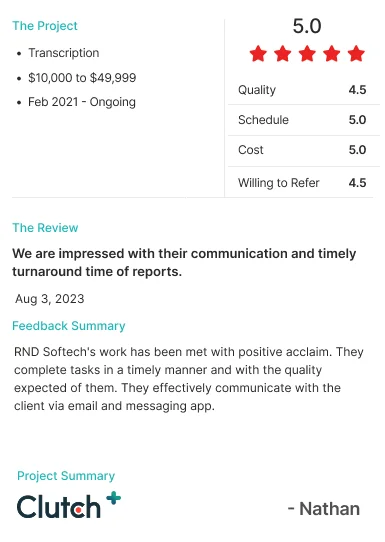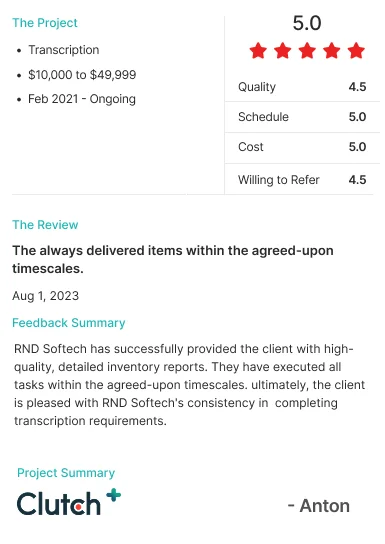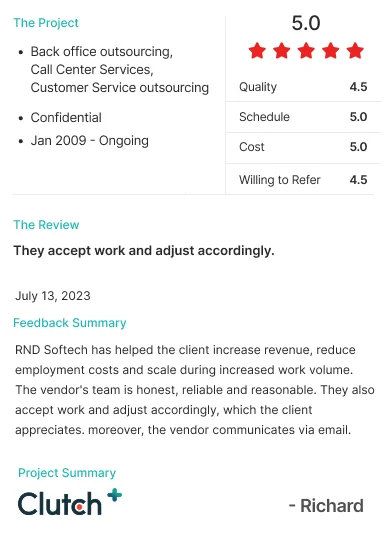Introduction
-
The commercial building equipped with office assets, a residential rental filled with furnishings, or a warehouse stocked with valuable goods has an emotional, legal & financial value. To protect the assets, precise, verifiable documentation of the property's contents and condition is required.
Financial losses, legal battles & strained relationships may occur when there is an absence of reliable records of properties. Some challenges may occur for property owners, such as
1. Disputes with tenants over damages
2. Disagreements during move-outs
3. Fraudulent insurance claims
Partnering with the best property inventory transcription service provides agencies with a detailed, impartial record of assets, fixtures & property conditions, protecting their investment through photographs, videos, written checklists & proper reports.
What is inventory documentation?
Inventory documentation is used to record and preserve detailed information about a property's fixtures, condition & assets at a specific point in time. When move-in & move-out happen, these systematic reports play a crucial role between the landlords and tenants to prevent disputes & asset protection according to the tenancy deposit protection guide.
● Preparing the checklist for furniture, appliances, fixtures & structured features.
● To find the exact condition of the item or area, capturing high-resolution photographs and videos is needed.
● Noting down any existing damages, wear and tear & quality of the item.
● Supporting documents of receipts, purchase invoices, warranties, or manuals.
The above details must be present in the comprehensive inventory property report.
How reliable is inventory documentation in protecting the property?
Property inventory transcription services provide agencies as a bridge between landlords and tenants, offering a clear, verifiable record of the property's condition & contents. It involves multiple stakeholders, including owners, insurers & sometimes even legal authorities
Preventing disputes
At the start of the tenancy, documenting the exact condition & contents of the property, along with a written description, photographs & condition reports, can help avoid disputes that often arise at the end of a lease.
● What has changed
● What constitutes normal wear and tear
● What requires tenant accountability
At the end of the tenancy or check-out, the above questions not only prevent disputes but also strengthen trust as both parties work with transparency.
Legal & insurance protection
Suppose any accidental damages or natural disasters occur without proper proof of ownership & condition. In that case, the claims may be delayed, reduced, or even denied when recording the losses from them to insurers and legal authorities.
● Detailed & time-stamped record of assets
● Including photographs, receipts & cognition reports
It can help make it easier to validate claims and minimize disputes. When applying for high-value claims, the inventory documentation must ensure compliance with many insurance policies that require proof of the condition & ownership.
Condition tracking
Without a reliable record of the item's wear and tear time, it is challenging to distinguish between normal ageing and actual damage caused by negligence, such as paint fading and carpets wearing out. Landlords can access the details below by comparing the before & after documentation of the property inventory report.
● Regular use vs tenants caused damage
● Schedule time for repairs & detecting deterioration
● Budget for maintenance and replacements
● Addressing the lifespan of assets
To protect both the owner's investment and the tenants' rights, a fair, transparent & proactive approach to tracking inventory documentation is necessary.
Financial Safeguarding
Minor disputes or unaccounted damages can lead to costly losses for the property owners or tenants. To provide a reliable reference for resale or refinancing, or to determine the property's worth to tenants, accurate inventory documentation reports, including furniture, appliances, fixtures & fittings, are helpful.
● Minimizing losses
● Protecting long-term investment
● Ensuring unexpected expenses
By providing proper documentation of the inventory report with the property's condition before and after occupancy, owners can recover the repair or replacement cost or can hold the tenant financially.
Key benefits of reliable inventory documentation
Transparency & trust: Accurately and unbiasedly prepared records can foster trust among property owners, tenants & insurers, leading to reduced misunderstandings.
Fraud prevention: To protect against false claims or unjustified liability, a clear report and its conditions will help.
Simplified management: Maintaining a structured record of check-ins, check-outs, audits, and inspections can streamline the process, making it faster & smoother without stress.
Compliance-ready: Most of the legal and insurance companies require a detailed report of the property's condition during claims, audits, or legal proceedings.
Wrap
When the inventory property is not documented in detail, unnecessary disputes, financial losses & legal complications may occur. To safeguard the property owners' assets by creating a clear, detailed & unbiased record of assets and their condition, landlords, tenants & insurers all benefit from greater transparency.
To strengthen insurance claims, avoid conflicts at the end of the tenancy, or preserve long-term asset value, the partner should utilize property inventory transcription services that provide an accurate and detailed report.
To safeguard your valuable property investments, consider partnering with a professional property inventory transcription service that offers technology-driven inventory solutions.
Author
Article Written by
Priya TM
Priya T.M, Vice President & COO- brings over 25 years of leadership and strategic expertise, from pioneering ISO-certified, Global offshore staffing solutions to driving the IT, Software, Healthcare operations at RND Softech.










